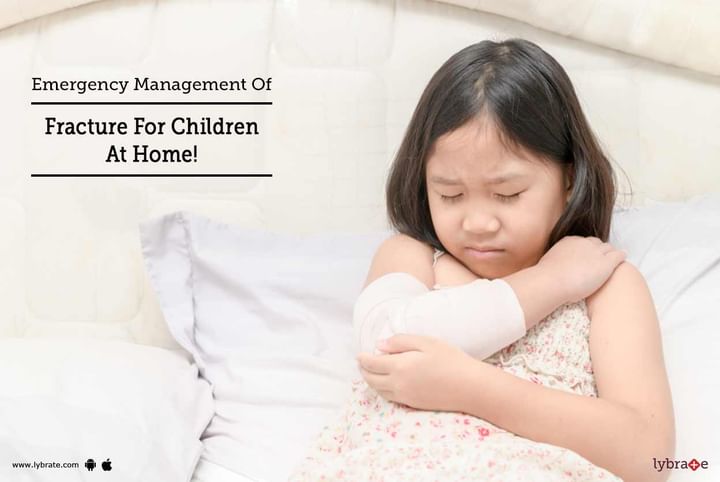Emergency Management Of Fracture For Children At Home!
Bones make up the skeletal framework of the body. They are a type of connective tissues and are made up of calcium. Their main function is to provide support and to protect our internal organs. When a bone in our body breaks, it is said to be a fracture.
Fracture occurs when an external force is exerted on a part of the body making the bones break. This breakage can be caused by reasons ranging from traumatic to medical. Traumatic causes include accidents, falls, and injuries, whereas medical conditions include osteoporosis and cancer of different types.
There are various types of fractures that affect individuals. The main types are closed and compound fractures. In a closed fracture, the broken bone does not pierce through the skin. In a compound fracture, the bone is broken down into pieces, thereby resulting in internal bleeding and infection. However, the most common type of fracture in children is the greenstick fracture. It is defined as a small and slender crack affecting children because their bones are more flexible and soft compared to that of adults.
When it comes to fractures in children, parents are advised to follow certain first aid measures to ensure faster healing and repairing.
- Immobilisation- The most important step in first aid for fracture is immobilizing the fractured portion. Do not move your child from his or her place unless there is a paramedic.
- Stop the bleeding- If the fracture has pierced the skin and has resulted in heavy bleeding, then you should put pressure on the wound with a sterile cloth. This should stop the bleeding.
- Put ice packs- If your child is in pain, put ice packs on the injured area. However, wrap the ice in cloth first and then put the pack on the wound to prevent swelling and to reduce pain.
- Provide support- If the fracture has taken place in the child's limb, provide support to him/her by placing a pillow under the leg. Try to comfort your child and do not panic in front of him/her.
- Use a splint- It is important to splint the injured area and know the basic steps involved in making a splint. For a splint, you can use a wooden scale or a folded magazine. Place the splints above and below the fractured area. Use gauze or tape to keep the splints in place. Do not put the tape or gauze directly over the fractured region. It is important to note that you do not move or realign the broken bone, causing further pain to your children.
After providing proper first aid care to your child, you should immediately call for an ambulance and take him or her to a doctor. Whatever you do, do not panic in front of your child and comfort him/her. In case you have a concern or query you can always consult an expert & get answers to your questions!



+1.svg)
